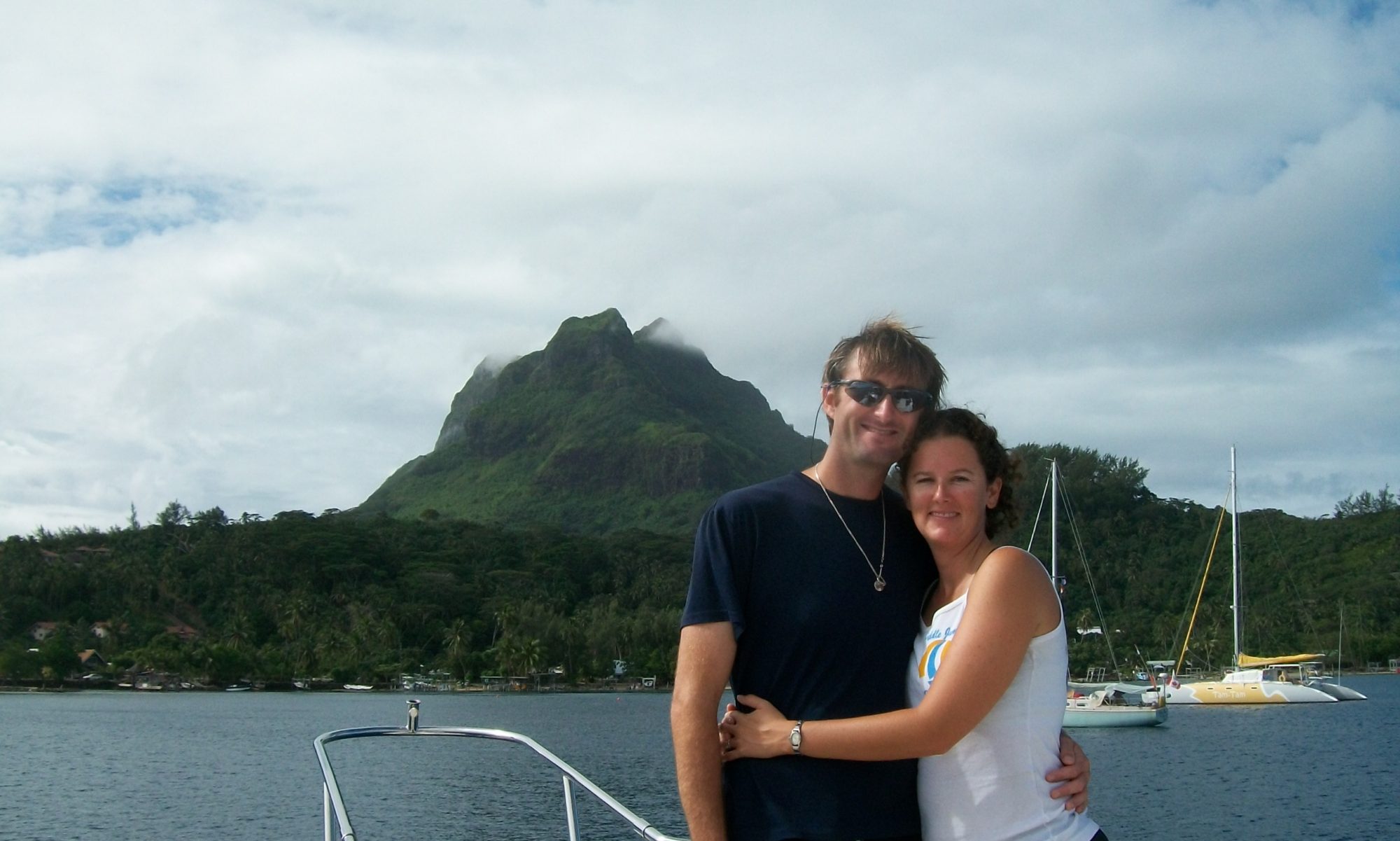Moorea, Society Islands, French Polynesia
At only 10 miles from Tahiti, way less populated and with regular 5 times a day ferry service from the capital city, Moorea is seen quite literally seen as Tahiti’s garden-esqe backyard. We got a good look at the place when we took one of the regular busses around the island to our over-water bungalow. (sounds classy huh?)
Oh look! A slide show! Now that is classy! 😉
While it doesn’t hold a candle to the Mexican bus service, the fact that Moorea had a regular bus service at all was pretty spectacular and yet again evidence we were no longer on an island that is unaccustomed to vacationers. In addition to the beautiful scenery, during our bus ride we discovered that the advent of mass tourism and all of its sundry necessities does not come without its added difficulties on the locals.
Admittedly, Moorea did a much better job of hiding their infrastructure behind local foliage. It’s a gorgeous place but, just so you know, it’s sinking. In fact, Tahiti, Bora Bora, Moorea, all those other South Pacific islands you have actually heard of? All sinking into the ocean…but don’t change your honeymoon plans yet; you’ve got a little time. The islands of the Society Archipelago display the second phase of Darwin’s theory of atoll formation, which is the phase where the island is slowly sinking and a coral atoll is growing around it. By slowly, we mean millimeters or maybe centimeters per year here. While no big deal in the span of a human life, over a few thousand years or so this creates an island partially surrounded by a lagoon that is protected by a coral reef. Which is what creates the protected reefs around the islands that we mentioned earlier. It’s an interesting change from the Tuamotu Islands, which were just the leftover coral atolls, and the Marquesas, which were the younger and more raw volcanic mountains. These places have the real estate of the Marquesas and the reefs of the Tuamotu. The reef provides some protection for the land against ocean swells and also is a breeding ground for fish – great diving, snorkeling and most importantly fishing. The mountain provides a refuge from the powerful tropical storms that can rage through and devastate the islands while also providing fertile volcanic soil to grow crops and raise animals. You certainly didn’t see baby horses out on the reefs.
Land for crops and coral for sea life – the Society Islands are veritable breadbaskets compared to their sister archipelagos. It makes them a lot more livable, which is probably another reason why they are the most inhabited islands of French Polynesia. Also made them the most desired by European colonists and consequently the most developed of the islands. Which then, at least in Tahiti’s case, led to them having the most commercial traffic, leading to the most polluted harbor (add commercial traffic to a reef that traps the water inside…) and then to Tahiti shipping in food to feed their overinflated population. Irony much?
Now, look, please understand that the waters of Tahiti are still among the most beautiful in the world and we freely admit to being spoiled rotten, picky little prissy perfectionists when it comes to water clarity. Tahiti is clear but you can see the difference from the other islands. Well, more accurately, you can’t see. As in the bottom of the sea bed in the reef 30 feet or more below us. It was something we had gotten used to over the past few months but was absent in Tahiti. Moorea has taken advantage of her closeness to Tahiti and role as a “natural retreat” to further avoid all the nasty side effects of commercialism, so hopefully only Tahiti had to take a hit for the team on this particular score.
Hey, it coulda been worse. Remember that island that got hit by 141 atomic bombs during French nuclear testing? Just saying.



2 Replies to “What do you mean sinking!”
Comments are closed.